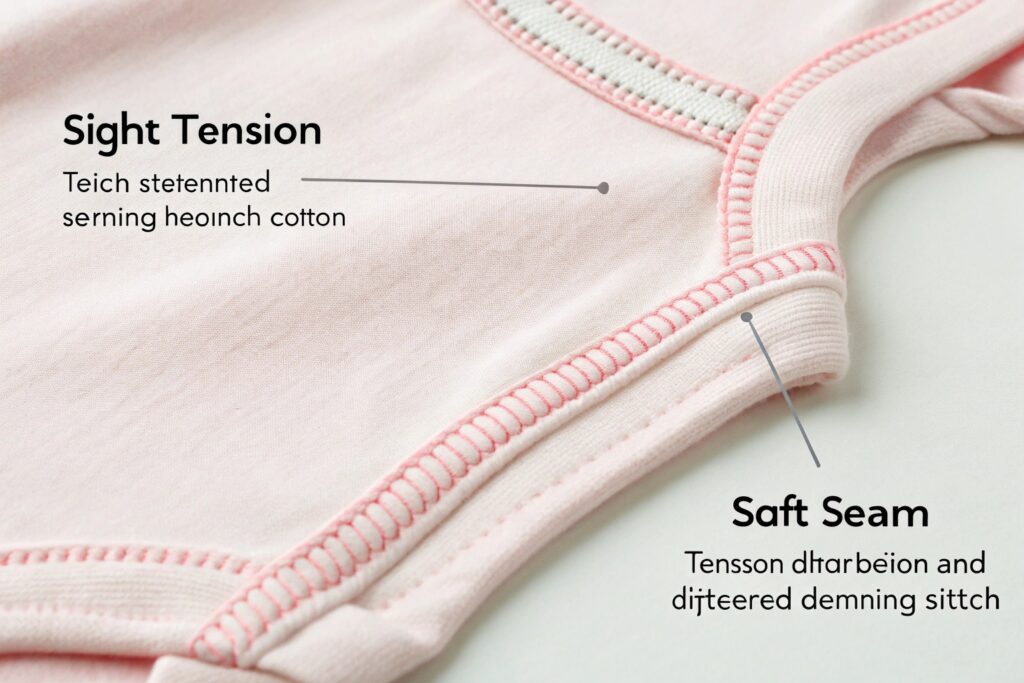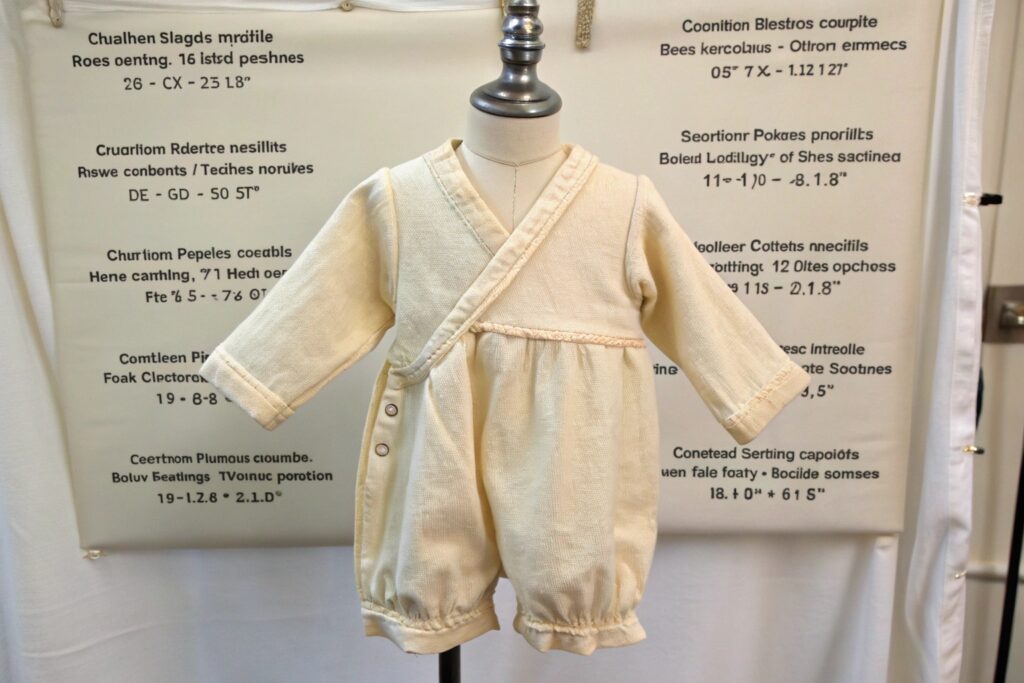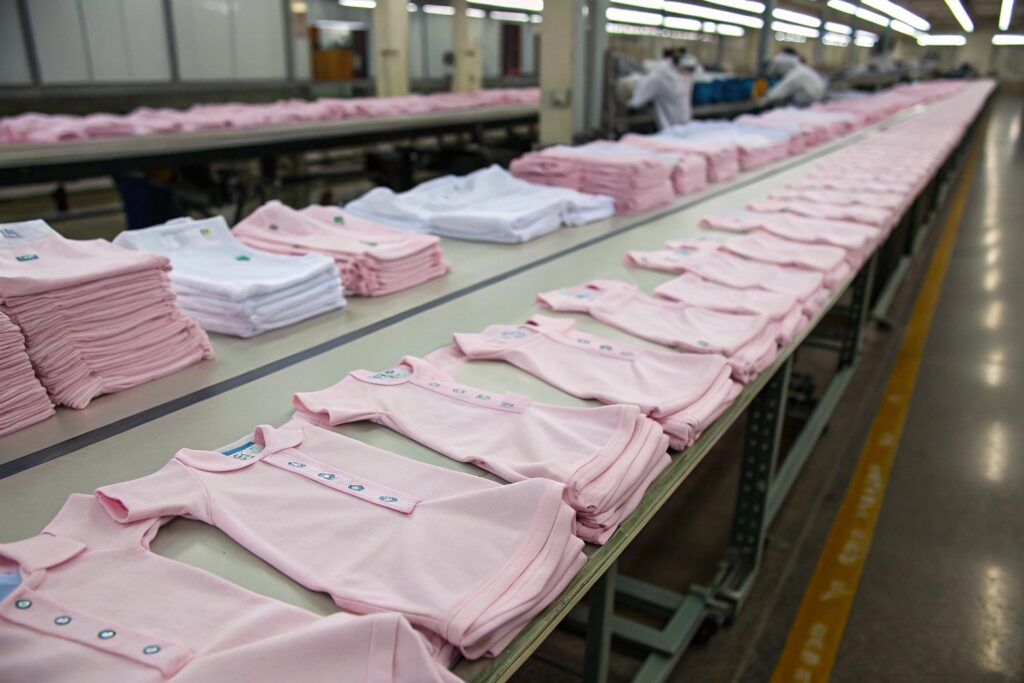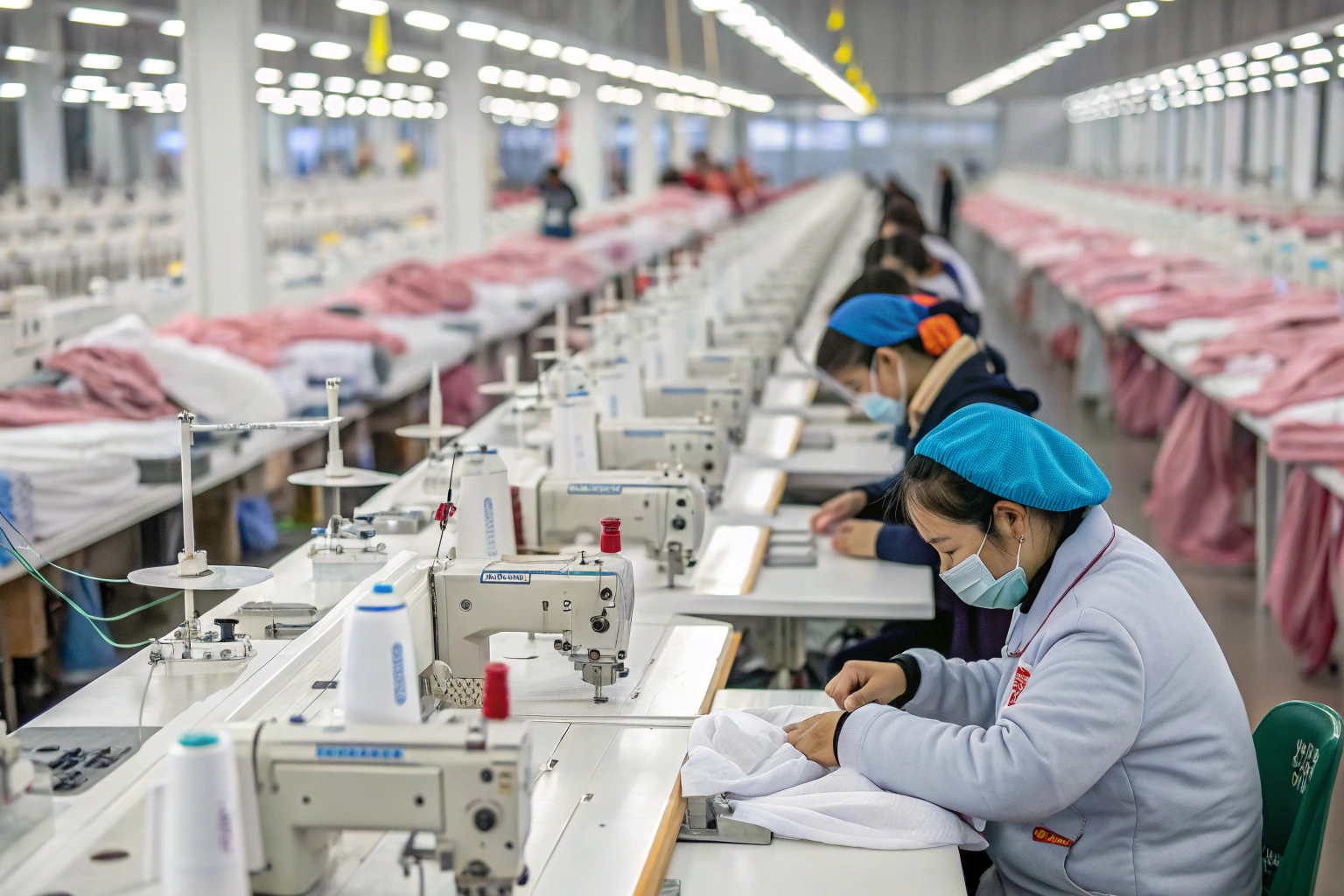Sewing isn’t just about putting fabric pieces together. It’s about creating clothes that last, feel good, and pass every quality test.
Following sewing guidelines is essential to ensure product quality, safety, and consistency—especially in bulk manufacturing. These rules keep garments aligned with client expectations and international standards.
Cutting corners in sewing may save a minute per garment, but it can cost entire orders, customer trust, or worse—brand reputation. Here’s why sticking to the guidelines is never optional.
How Sewing Standards Ensure Garment Quality?
A good-looking garment doesn’t always mean a good-quality garment. The secret lies in stitching strength, seam alignment, and material treatment.
Sewing standards guide everything from stitch density to seam positioning. Following these ensures durability, comfort, and finish consistency across production.

What specific sewing standards directly influence garment durability and performance?
Let’s take a common example: the lockstitch. When executed with the right tension and density, it holds garments together through repeated wear and wash cycles. But what happens if tension is too loose or seam allowances are skipped? The thread breaks, fabric frays, and the garment is returned.
Key sewing standards often include:
| Sewing Element | Industry Standard |
|---|---|
| Stitch per inch (SPI) | 10–12 SPI for woven, 8–10 SPI for knits |
| Seam allowance | 1/4" for kidswear, 3/8" for outerwear |
| Thread tension | Balanced, with no puckering or pulling |
| Backtacking | Required at all critical stress points |
| Fabric alignment | Consistent grain direction and no twisting |
Garment quality isn't luck—it’s process. Without strict sewing standards, especially for children's wear or sportswear, you risk failed QC checks and rejected shipments.
At Fumao Clothing, we follow ASTM D6193 sewing rules for all exported garments. Buyers from the U.S. especially value this level of detail because it aligns with their retail compliance and consumer expectations.
How do sewing guidelines affect customer satisfaction and return rates?
You can feel the difference when a garment is made well. Clean seams, invisible puckering, and stable hems—these elements are rarely noticed when done right. But they are always noticed when done wrong.
Inconsistent thread tension causes curling. Loose seams fall apart in one wash. Misaligned panels create twisted fits. When these issues stack up, even the best fabric can’t save the product.
Retailers report up to 70% of returns due to "fit and finish" issues. In bulk production, this becomes expensive. By ensuring every unit matches the approved sewing standard, we protect both buyer margins and brand reputation.
At Fumao Clothing, we train every line supervisor to use sewing checkpoints at each stage. This reduces rework and aligns production with pre-approved gold seal samples.
Common Mistakes When Ignoring Sewing Guidelines?
When people skip the rules in sewing, it’s not always due to laziness—sometimes it's time pressure, poor training, or wrong assumptions. But the consequences always hurt production quality.
Ignoring sewing guidelines often leads to thread breakage, uneven stitching, size inconsistency, and poor fit. These errors impact quality, raise costs, and increase product rejection.

What typical errors arise when stitching rules are ignored during mass production?
The list is long, but here are the most common:
| Mistake | Result |
|---|---|
| Skipped backtack | Seams open at stress points after washing |
| Inconsistent SPI | Stitch lines don’t hold or pull too tight |
| Improper seam allowance | Garments don’t match size specs |
| Poor thread matching | Threads break under tension |
| Wrong presser foot usage | Fabric stretching or skipped stitches |
One missed step during sewing can lead to ten failed garments. In B2B production, that’s not just a waste—it’s a breach of trust.
As someone who’s worked directly with buyers across North America and Europe, I’ve seen how a single mistake in one size run can jeopardize repeat orders. That’s why our SOP at Fumao includes visual references and signed-off sample approvals for every PO.
How do incorrect stitches affect the long-term lifespan of a garment?
It all comes down to wear and tear. When the wrong thread type or tension is used, the garment might look fine at first. But after three or four washes, the true quality appears.
Incorrect stitches might unravel. Seams might misalign. The garment might shrink unevenly due to fabric stress. Worse, these faults often show after the buyer has already launched the product—meaning returns and complaints spike after the fact.
Even a minor deviation from the approved stitch pattern (like chain stitch vs lock stitch) can lead to unexpected stretching or holes. That’s why sticking to the plan isn’t optional—it’s protection.
Impact of Stitching Accuracy on Kidswear Safety
Parents don’t just want cute clothes for their kids—they want safe ones. And in children’s clothing, every seam and stitch matters more than anywhere else.
Accurate stitching in kidswear prevents loose threads, open seams, and exposed trims. These defects can cause choking hazards, skin irritation, or garment failure during wear.

What are the child-specific safety risks from bad stitching?
Kids move, crawl, bite, and chew. Loose threads become toys. Poorly finished seams scratch their skin. Misaligned labels rub against their necks. In worst-case scenarios, exposed trims or fasteners can cause choking or skin infection.
That’s why international standards like CPSIA in the U.S. and EN 14682 in Europe regulate not just fabric content, but also stitching practices for kidswear. Any deviation—like untrimmed thread tails, open seams at diaper edges, or failed pull tests—can make a product unfit for retail.
At Fumao, we apply double-stitching on baby apparel stress zones, bar-tack on all pocket entries, and full lockstitch closure for snaps and buttons. This reduces safety risks and helps our clients meet audit requirements.
How can stitching accuracy be maintained across multi-size kidswear batches?
It’s easy to get accurate stitches on a sample. It’s harder when producing 5,000 units in sizes from newborn to toddler. That’s where grade rules and pre-production planning come in.
Here’s what we follow:
- Size-Specific Tension Settings: Smaller sizes require lighter thread tension to avoid fabric distortion.
- Adjustable Seam Margins: Each size batch is cut and sewn using grade-specific seam instructions.
- Dedicated Line Leaders: Each kidswear PO is assigned a trained line head for final inspection.
- In-Line Audits Every 2 Hours: We measure stitching accuracy using lightboxes and SPI guides.
These measures keep stitching consistent across runs, ensuring that every garment—no matter the size—meets the same safety and comfort expectations.
Why Consistency Matters in Bulk Apparel Production?
Buyers don’t just want beautiful clothes. They want repeatable quality, across thousands of pieces. That’s where consistency becomes more valuable than creativity.
Consistency in sewing maintains garment fit, shape, strength, and look across the full order. It reduces waste, builds buyer trust, and supports scalable production.

How does inconsistency impact bulk apparel fulfillment and reorders?
Imagine this: A buyer approves a size M sample with perfect finishing and exact measurements. But in bulk, size M varies across cartons. Some fit tight, some loose. Hems twist. Sleeves hang unevenly. That buyer now needs to deal with complaints, regrading, and refunds.
Inconsistency results from:
- Variable stitch tension across machines
- Operator fatigue or skill mismatch
- Changing needle sizes mid-run
- Missing or incorrect tech pack usage
Buyers get frustrated not just by product faults—but by unexpected variations. This makes reorder forecasting difficult. Many of our clients switched to Fumao after facing failed scale-ups with previous suppliers. We’ve retained them by enforcing bulk approval samples, in-line audits, and operator-specific QC logs.
What systems can ensure sewing consistency across 5,000+ units?
We rely on four key pillars:
| System | Benefit |
|---|---|
| Tech Pack & Gold Seals | Standard for all operators to follow |
| In-line Quality Audits | Detect problems before they grow |
| Machine Calibration Logs | Maintain SPI, tension, and seam shape |
| Final QC by Size Groups | Ensure consistency within size categories |
This structure doesn’t just improve product quality—it reduces delays, rework, and loss. Our buyers appreciate that when they reorder 3 months later, the product looks and feels exactly the same.
Consistency means control. And in B2B apparel, control leads to long-term trust.
Conclusion
Every stitch counts. Following sewing guidelines ensures safety, quality, and consistency—especially in bulk orders. It’s the backbone of great garment production.










